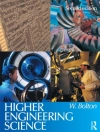From the nanoscale to the macroscopic scale, intelligent materials are triggering a response across both dimensions and scientific disciplines…
World class, leading experts in the fields of chemistry, physics and engineering have contributed to Intelligent Materials, highlighting the importance of smart material science in the 21st century. In this exceptional text the expertise of specialists across the globe is drawn upon to present a truly interdisciplinary outline of the topic. Covering both a bottom-up chemical, and top-down engineering approach to the design of intelligent materials the Editors of the book are bridging a vital gap between various scientific authorities. The influence of current research in this field on future technology is undisputed and potential applications of intelligent materials span nanoscience, nano technology, medicine, engineering, biotechnology, pharmaceutical and many other industries.
This is an authoritative introduction to the most recent developments in the area, which will provide the reader with a better understanding of the almost unlimited opportunities in the progress and design of new intelligent materials.
An indispensable reference for anyone contemplating working in the field!
Comments on this book…
‘This will be the starting point for all researchers looking for industrial solutions involving smart materials. Congratulations to the Editors for providing such a vast and interdisciplinary book.’
P.-G de Gennes, France
Prix Nobel de Physic 1991
สารบัญ
Foreword: Preface;
Introduction;
1-Chemically Driven Artificial Molecular Machines;
2-Photochemically Controlled Molecular Devices and Machines;
3-Tansition Metal Complex-Based Molecular Machines;
4-Chemomechanical Polymers;
5-Ionic Polymer Metal Nano-Composites as Intelligent Materials and Artificial Muscles;
6-Artificial Muscles, Sensing and Multifunctionality from the Electrochemical Properties of Conductive Polymers;
7-Electrochemically-Controllable Polyacrylonitrile Artificial Muscle as an Intelligent Material;
8-Unimolecular Electronic Devices;9-Piezoelectric Ceramics as Intelligent Multi-Functional Materials;
10-Ferroelectric Relaxor Polymers As Intelligent Soft Actuators and Artificial Muscles;
11-Magnetic Polymeric Gels As Intelligent Artificial Muscles;
12-Intelligent Materials: Shape-Memory Polymers;
13-Shape Memory Alloys as Multi-Functional Materials;
14-Magnetorheological Materials And Their Applications: A Review;
15-Metal Hydrides as Intelligent Materials and Artificial Muscles;
16-Dielectric Elastomer Actuators as Intelligent Materials for Actuation, Sensing and Generation;
17-Azobenzene Polymers as Photo-Mechanical and Multifunctional Smart Materials;
18-Intelligent Chitosan-based Hydrogels as Multifunctional Materials;
19-Polymer-Protein Complexation and its Application as ATP-Driven Gel Machine;
20-Intelligent Composite Materials Having Capabilities of Sensing, Health Monitoring, Actuation, Self-Repair and Multifunctionality’;
21-Overview of Liquid Crystal Elastomers, Magnetic Shape Memory Materials, Fullerenes, Carbon Nanotubes, Non-Ionic Smart Polymers and Electrorheological Fluids as Intelligent and Multi-Functional Materials;
22-Biogenic and Bioinspired Intelligent Materials -from DNA-based Devices to Biochips and Drug Delivery Systems;
Chemically Driven Artificial Molecular Machines;
Photochemically Controlled Molecular Devices and Machines;
Chemomechanical Polymers;
Ionic Polymer Metal;
Nano-Composites as Intelligent Materials and Artificial Muscles;
Piezoelectric Ceramics as Intelligent Multi-Functional Materials;
Ferroelectric Relaxor Polymers As Intelligent Soft Actuators and Artificial Muscles;
Intelligent Materials: Shape-Memory Polymers Magnetorheological Materials And Their Applications: A Review: 15-Metal Hydrides as Intelligent Materials and Artificial Muscles;
Polymer-Protein Complexation and its Application as ATP-Driven Gel Machine;
Biogenic and Bioinspired Intelligent Materials
เกี่ยวกับผู้แต่ง
Mohsen Shahinpoor is the Chief Scientist and Director of Biomedical Poducts at Environmental Robots Inc. and a Regents Professor at the Univesity of New Mexico. His work in the field of Robotic Systems and Smart/Intelligent Materials covers over some 22 years, and includes numerous publications and patents. Prof. Dr. Hans-Joerg Schneider is Professor em. of organic chemistry at the Universitaet des Saarlandes, Germany. He has played a pivotal role in transferring the principals of molecular recognition into supramolecular polymers and has published a multitude of books and papers in the field, with several patents pending for intelligent chemomechanical materials.












